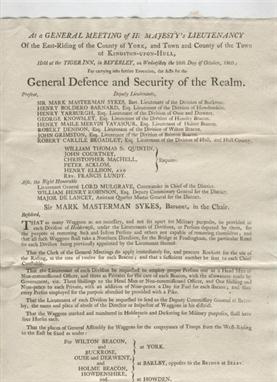We found 596772 price guide item(s) matching your search
There are 596772 lots that match your search criteria. Subscribe now to get instant access to the full price guide service.
Click here to subscribe- List
- Grid
-
596772 item(s)/page
Three Scottish provincial silver Fiddle pattern teaspoons, the first terminal engraved with script initials `JG`, Elgin circa 1840 by Joseph Pozzi and Robert Stewart, the second terminal engraved with script initials `AHG`, Aberdeen circa 1825 by William Whitecross, the third terminal engraved with script initials `ER`, Dundee, circa 1820.
A group of British commemorative coinage, comprising three five pounds crowns, comprising 1998, 2000 and 2001, two two pounds coins 1989, a two pounds coin 1995, a silver proof one pound coin 2003, two Elizabeth II two pounds Britannias 1998 and 2002, a fifty pence 1994, a medallion commemorating the 50th Anniversary of the Battle of Britain, and a crown 1980, mounted as a first day cover.
A quantity of European coins, including France, Greece, Italy, Spain, Yugoslavia, Austria, Germany and Portugal, a quantity of South American coins, including Uruguay, Argentina, Brazil and Chile, English pre-decimal coins, including florins, decimal issues, including four two pounds coins 1986, ten large fifty pence pieces, a 1983 nine coin specimen set, further foreign coins, a Canada souvenir dollar 1981, a Britain`s First Decimal Coin Set, Polish banknotes, a bronze medallion, Edward VII issue, detailed `Society of Arts, Manufactures and Commerce`, cased, and fifteen Elizabeth II commemorative crowns.
A pair of Wedgwood sage green jasperware plates, 20th Century, sprigged in white, the first with a central Cupid preparing his bow, the second with a central Cupid sharpening his arrows, each within foliate wreaths hung from scallop shells centred by Cupids at work and play, together with a group of other Wedgwood jasperwares, 20th Century, including plates, boxes and covers and pin dishes, and four other pieces.
Two Worcester porcelain U-shaped coffee cups with grooved handles, circa 1770, the first with an iron red and gilt cartouche enclosing a floral spray within scattered sprigs, the second with scattered floral sprigs and sprays, together with two other similar floral painted coffee cups, one with a ribbon tied famille rose bouquet.
A pair of Meissen porcelain twin branch figural and naturalistic candelabra, late 19th Century, each modelled as a tree supporting twin floral painted sconces, the first with a boy climbing the tree to reach eggs in a nest which he passes to his mother below, the second with a father and child beneath the tree looking at eggs in a nest, crossed swords in underglaze blue to bases with incised numerals `1153` and `1160` and red painted numerals `57`, height approx 22.5cm (faults and restoration).
A selection of Spode blue and white printed pottery from the `Caramanian` series, comprising; a lozenge shaped dish, `Citadel near Corinth`, 28.5cm in length; a soup dish, `City of Corinth`, 25cm diameter; a plate, `Sarcophagi and Sepulchres at the head of the harbour of Cacamo`, 25cm diameter; a plate, `Necropolis or cemetry of Cacamo`, 21.5cm diameter and another plate, `Caramanian Castle`, 21.5cm diameter, printed and impressed marks, various dates, mostly first half 19th century Provenance: The Robinson Collection..
A selection of mostly Spode, including a `Gothic Castle` soup tureen lid, a `Greek` pattern sauce tureen lid and other assorted lids and a Miles Mason cup and a custard cup stand, various dates mostly first half 19th century and A Spode plate `Bengal Artillery` Provenance: The Robinson Collection..
A miscellaneous selection of Staffordshire blue and white printed pottery, comprising; a Spode sauce tureen and integral stand, possibly for asparagus, printed with the `Flying Pennant` pattern, 30cm long; and three other pieces including a `Willow` pattern serving dish, various dates mostly first half 19th century Provenance: The Robinson Collection. (see illustration on website).
Four items of Staffordshire blue and white printed pottery, comprising; a sauce tureen with a cow milking pattern from the `Durham Ox` series, 18cm wide, a Spode chestnut basket printed with the `Gothic Castle` pattern, a `French Scenery` pattern slop bowl and a stand for a tureen, various dates first half 19th century, the tureen and bowl with paper labels for the Rhoda Cope Collection (see illustration on website).
A large engraved commemorative and dated rummer for Admiral, Lord Nelson, decorated with His Majesty`s Ship Victory with topsails and topgallants set, gun-ports open, verso inscribed IN. MEMORY OF. LORD NELSON OCTR. 21 1805, wtihin a laurel wreath, 19cm high, first quarter 19th century Provenance: Property of a Berkshire collector..
An engraved commemorative beaker of possible Scottish significance, the cylindrical bowl applied with a central annular band and engraved with two bands of stylised thistles and initials R * B, 10cm high, first quarter 19th century (see illustration on website) Provenance: Property of a Berkshire collector..
A commemorative hunting wine glass, the fluted bowl engraved with a fox and inscribed TALLIO, 13cm high; another similar fluted wine glass with initials HB, 11cm high; two engraved small fluted wine glasses and three small ale flutes, first half 19th century (see illustration on website) Provenance: Property of a Berkshire collector..
[Nelson] A Royal Doulton Lambeth stoneware commemorative mug, a beaker and a candle or match stand, circa 1905, the first two with oval portraits, battle scenes, `Nelson` and `England Expects Every Man Will Do His Duty`, impressed marks, 12.5cm and 9.5cm high; the last, modelled as Nelson`s hat, in tan glaze, on a plinth in greens with `Nelson 1758-1805`, impressed mark, 10cm high (3).
A Danish silver coloured Continental (Antik) pattern table service by Georg Jensen, post 1945 stamped marks, comprising: Six table forks, Six fish knives, Six fish forks, Six dessert spoons, Six soup spoons, A serving fork, A ladle 1580g (50.8 oz); Together with the following with silver handles and stainless steel blades: Six table knives, Six dessert/tea knives, A cheese knife, The Antik or Continental was the first flatware pattern introduced in 1906..
Military – Afghan Wars – Lt Col Dennie fine ms document being a long list of charges brought against Lt Col William Dennie of 13th Light Infantry at Agra by the order of Maj Gen James Watson Commander in Chief India. A total of 28 charges written in a neat secretarial hand on 13pp folio. A remarkably long list of charges against a senior officer. Dennie is charged with deserting his men bullying falsifying muster rolls using offensive language etc. Clearly Dennie was one of those heroes who didn’t suffer fools gladly and followed his own military agendas. But a hero Dennie certainly was as he later played an important role in the storming of Kabul at the start of the first Afghan War his account of the campaign was published in 1843. A remarkable and intriguing document which reveals considerable information on the British army at this time.
Political Substance of the Speeches made in the House of Commons on Wednesday the 15th of December 1779 on Mr Burke’s giving notice of intention to bring in a Bill after the Christmas recess for the Retrenchment of Public Expences and for the better securing the Independence of Parliament. London : J Almon 1779. 17pp plus title 8vo Stitched untrimmed partly uncut. The “Substance” was evidently conveyed to Almon by Burke himself who asserts his thesis that “The fatal and overgrown influence of the Crown” has caused “the whole of all of our grievances.” He speaks out against corrupt negligent self-serving power-hungry Ministers: “the same men in the same power sitting undisturbed before you though thirteen colonies have been lost.” Supporting Burke Dempster responds “that the influence of the Crown is the true cause of the mischievous origin the destructive progress the absurd conduct and the obstinate prosecution without view or hope of this cursed American war... If it continues and goes on as it has done I vow to God I do not think his Majesty will sit securely on his throne.” FIRST EDITION. Todd 31. 85 NUC 0972614 [1]. Not in Sabin or Adams J Almon
Airships – Postal History – the Graf Zeppelin postcard stamped 1929 and bearing amongst many other postal markings the stamp of the first round the world flight addressed to Marshall M Reisman of Syracuse New York and endorsed in ms ‘to go around the world aboard the Graf Zeppelin’ and with further endorsement to verso : ‘I hope this gets around the world with the ‘Graf Zeppelin’ Marshall M Reisman’
Autograph – exploration – polar – Frederick A Cook explorer and claimant to the North Pole autograph manuscript (unsigned) in his hand entitled ‘The Walk indicates character’ written in pencil on a single leaf of American quarto paper spilt across a fold (easily repaired in our estimation). Rare. Together with a German issue satirical postcard lampooning the claims of both Cook and Peary to having reached the North Pole first – the postcard shows a German party reaching the North Pole by Zeppelin while Cook and Peary fight it out on the ice watched by a walrus and polar bear. Cook an American explorer and physician claimed to have reached the North Pole on April 21st 1908 a year before a similar claim by Robert Peary. Cook had also claimed in 1906 to have reached the summit of Mt McKinley – which was denounced as fraudulent by Peary. When Cook claimed the North Pole in 1908 his claim was immediately discredited by Peary – but Peary’s own claim has long been disputed.
Napoleon – ephemera three rare broadsides issued in 1804 at a time when this country was under real threat of invasion by Napoleon. All in near mint condition they include notice of a General Meeting of the Lieutenancy of the East Riding of Yorkshire to take the necessary steps for the general defence and security of the realm; a copy of the address and prayer at the height of the crisis and a copy of the articles of enrolment for the Grimston Yeomany Cavalry East Yorkshire set up to act as the last line of defence against the threat of invasion. By 1804 Britain lay open to the real threat of invasion by Napoleon. As in 1940 the country’s defences were poor to say the least and hurried measures were drawn up to protect the country. In the first broadside contingency measures are announced for the mass evacuation of the coast: ‘...that as many wagons as are necessary and not et apart for military purposes be provided in each division of Holderness for the purpose of removing sick and infirm persons and others not capable of removing themselves and that all such wagons shall take a north direction for the bridge at Frodingham...that the clerk of the general meetings do apply immediately for and procure rockets for the use of the riding at the rate of twelve for each Beacon ...’
-
596772 item(s)/page





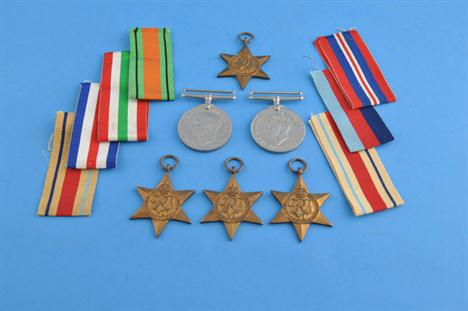



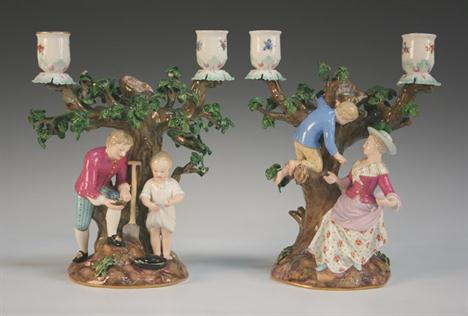




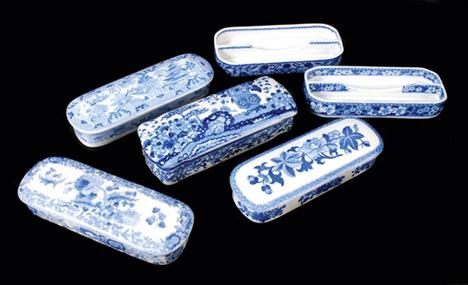





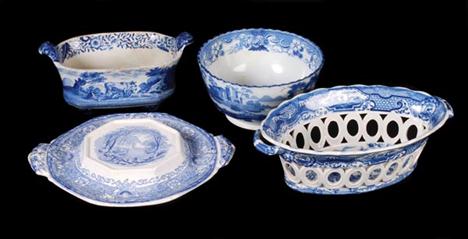




![[Nelson] A Royal Doulton Lambeth stoneware commemorative mug, a beaker and a candle or match stand, circa 1905, the first two](http://lot-images.atgmedia.com/SR/10011/2849501/247-20111222141150_468x382.jpg)





